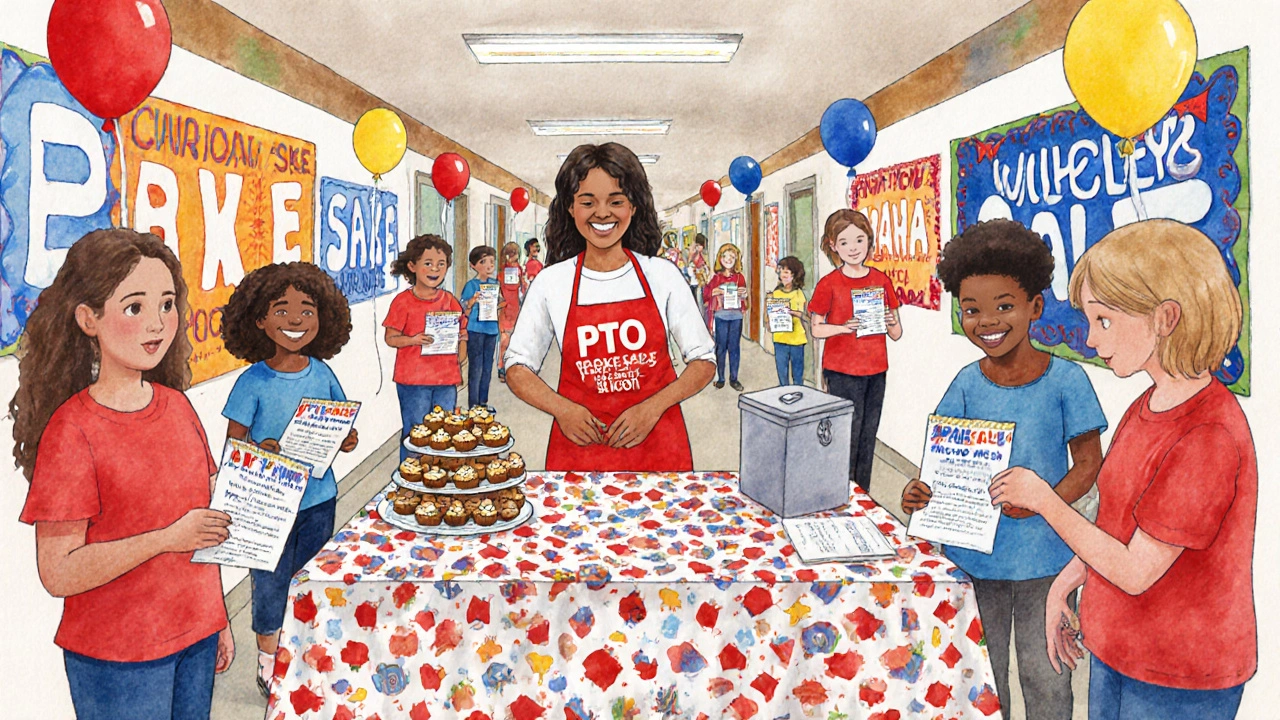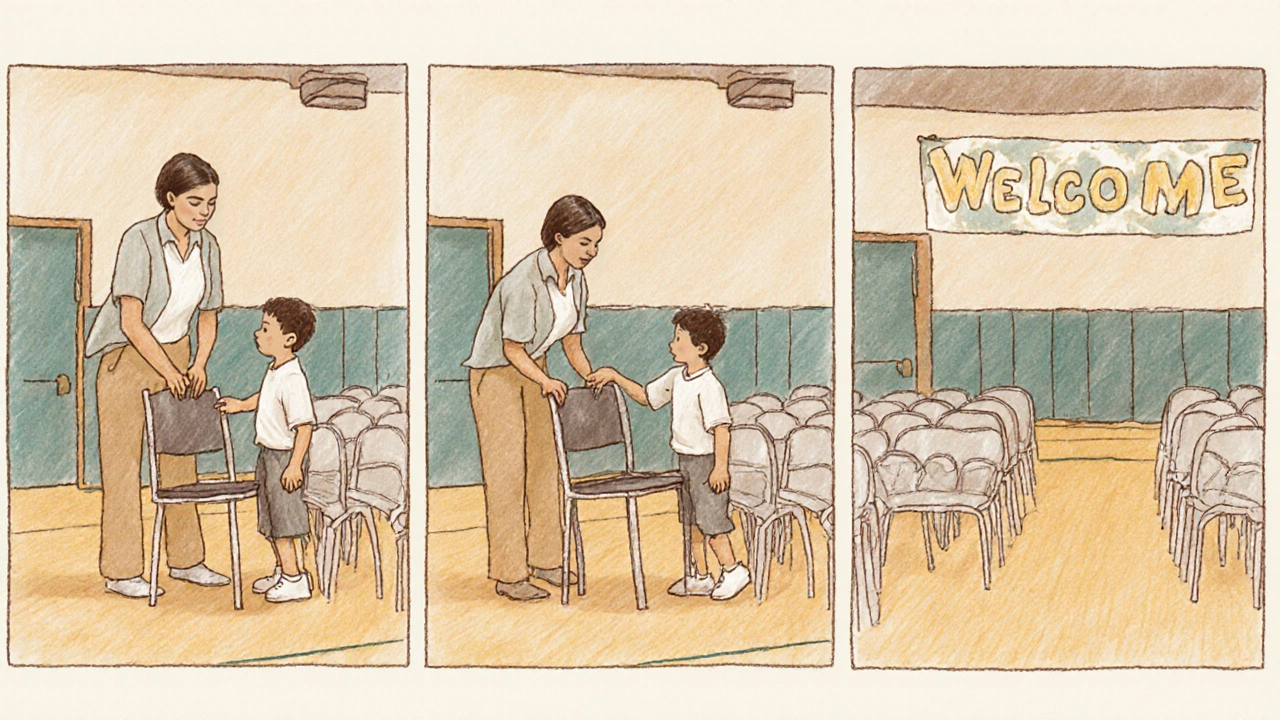What is a PTO Mom? Explained and How She Helps Schools
 Oct, 13 2025
Oct, 13 2025
PTO Time Commitment Calculator
Estimate Your PTO Time Commitment
How much time can you commit to your school's Parent-Teacher Organization?
Start with 2-4 hours per week for consistent contribution.
Quick Takeaways
- A PTO mom is a parent who volunteers with the school’s Parent‑Teacher Organization.
- She helps plan events, raise money, and support classroom projects.
- Her role differs from a PTA mom in governance structure and focus.
- Involvement boosts student resources, teacher morale, and community spirit.
- Getting started is as easy as attending a meeting and signing up for a task.
When you hear the term PTO mom is a parent who actively participates in a school's Parent‑Teacher Organization, helping plan events, raise funds, and support classroom needs, you know she’s more than just a volunteer.
Understanding what a PTO mom does can change how parents see school involvement. Below we break down the role, the daily tasks, and why the whole school community benefits.
What Exactly Is a PTO Mom?
A Parent‑Teacher Organization (PTO) is a nonprofit group that partners parents, teachers, and staff to improve the learning environment. A PTO mom is simply a parent who joins that group and takes on hands‑on responsibilities. Unlike a casual helper who shows up once a year, a PTO mom usually commits to a school year or longer, attending regular meetings, serving on committees, and often leading major projects.

Core Responsibilities
These duties can vary by school, but most PTO moms regularly handle a few key areas:
- Event planning: organizing book fairs, bake sales, holiday parties, and family nights.
- Fundraising: running campaigns for classroom supplies, technology upgrades, or field trips.
- Volunteer coordination: matching other parents with tasks such as chaperoning trips or staffing the cafeteria.
- Communication: sending newsletters, maintaining the PTO website, and updating social media.
- Advocacy: relaying parent concerns to school leadership and supporting teacher initiatives.
Each task relies on a mix of creativity, organization, and a willingness to roll up sleeves.
PTO Mom vs. PTA Mom: A Quick Comparison
| Aspect | PTO Mom | PTA Mom |
|---|---|---|
| Legal structure | Operates as a nonprofit under the national PTO network. | Affiliated with the National PTA, which has a broader policy‑advocacy role. |
| Primary focus | Direct classroom support and school‑level events. | State‑wide or national education policy, plus school programs. |
| Fundraising style | Local, project‑specific campaigns (e.g., playground equipment). | Often larger‑scale drives tied to national initiatives. |
| Member commitment | Typically one‑year term with rotating committee roles. | May involve longer terms due to state‑level responsibilities. |
Why Schools Love Having a PTO Mom
When a dedicated PTO mom steps in, the ripple effects are tangible:
- Classroom resources improve - a fifth‑grade teacher reported a 30% increase in hands‑on science kits after a PTO fundraiser.
- Teacher workload eases - volunteers handle snack duties, allowing teachers to focus on instruction.
- Student morale rises - well‑planned events create a sense of belonging and pride.
- Community ties strengthen - parents meet each other, creating networks that extend beyond school walls.
These outcomes are backed by a 2022 study from the National Center for Education Statistics, which showed schools with active PTOs had higher parent‑teacher satisfaction scores.

Common Challenges and How to Tackle Them
Even enthusiastic PTO moms face hurdles. Here are three frequent issues and practical fixes:
- Time constraints: Schedule short, focused “task‑sprint” meetings (30minutes) and use shared Google Calendars to keep everyone on track.
- Volunteer fatigue: Rotate responsibilities every month, and recognize effort publicly through a “Volunteer of the Month” shout‑out.
- Budget transparency: Publish a simple spreadsheet after each fundraiser, highlighting income, expenses, and where the money goes.
Pro tip: Keep a “PTO Playbook” - a living document that outlines processes, contact lists, and past event templates. New parents can jump in without reinventing the wheel.
Step‑by‑Step: Becoming a PTO Mom
- Attend the next school PTO meeting (usually advertised in the welcome packet or via the school’s website).
- Introduce yourself and ask about current committees - pick one that matches your skill set (e.g., social media, baking, budgeting).
- Sign the volunteer agreement and add your contact info to the PTO contact sheet.
- Volunteer for a small task first - like setting up chairs for a school assembly - to get comfortable with the team.
- Take on a larger project after a few weeks, such as coordinating a book fair or leading a fundraising drive.
- Share feedback with the PTO board and suggest improvements; your fresh perspective is valuable.
Remember, the goal isn’t perfection; it’s consistent contribution that adds up over the year.
Frequently Asked Questions
Do I need special training to become a PTO mom?
No formal certification is required. Most schools provide a brief orientation, and you’ll learn on the job. Skills like organization, communication, and a willingness to help are enough to get started.
How much time should I expect to commit each week?
It varies. Some weeks may need only a few hours for a fundraiser, while event weeks could require evenings and weekends. Planning for 2‑4 hours per week is a safe estimate.
Can I involve my children in PTO activities?
Absolutely. Many PTOs have junior volunteer programs where kids help with cart‑wheels, planting, or snack stations. It teaches responsibility and community spirit.
What’s the difference between a PTO and a PTA?
A PTO focuses on school‑level support and operates as a local nonprofit. A PTA is part of the national Parent Teacher Association, which also engages in broader policy advocacy. Both aim to help students, but their structures and scopes differ.
How can I suggest new ideas to the PTO board?
Most PTOs have a suggestion box or a regular agenda slot for new proposals. Bring a brief plan, estimated costs, and potential volunteers - that makes it easier for the board to approve.
